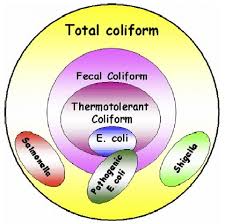Finding Coliform or other bacteria in water doesn't mean that it is bad for you. If this coliform is present then there may be other bacteria present as well. The health symptoms related to drinking or swallowing water contaminated with fecal coliform bacteria generally range from no ill effects to cramps and diarrhea (gastrointestinal distress). The presence of any fecal coliform in drinking water is of immediate concern as many diseases can be spread through fecal transmission. According to public health testing for every type of disease causing organism takes a very long time and could be quite expensive. There are three different tests that can be preformed for the coliform and each level has a different risk towards human health. If you have water that has the coliform bacterial then you should not drink the water before boiling it for at least one minute. If you have a well you can disinfect it by chlorinating it but the water may taste like chlorine. To reduce coliform contamination groundwater in a properly contracted well should have minimal-to-no coliform bacteria. If coliform are found in a well it means that bacterial and mineral slimes have built up on the walls and will need to be cleaned by a professional.
In this photo this shows that when there is coliform found there is most likely going to be other forms of bacteria in the sample. Even though there are not may E. coli pathogens they are very dangerous and can cause harm to your body if ingested.
This diagram just shows the different pathogens that can be in the total sample if there is coliform in it. There can be salmonella in the coliform that isn't fecal.
A summary of coliform is that it is not dangerous but it is an easy way to tell if the dangerous bacteria is in the environment. People get water from wells in rural areas should regularly check for this bacteria to make sure they aren't at risk.

